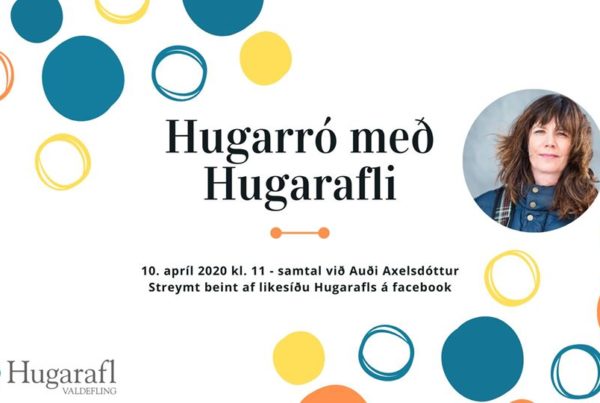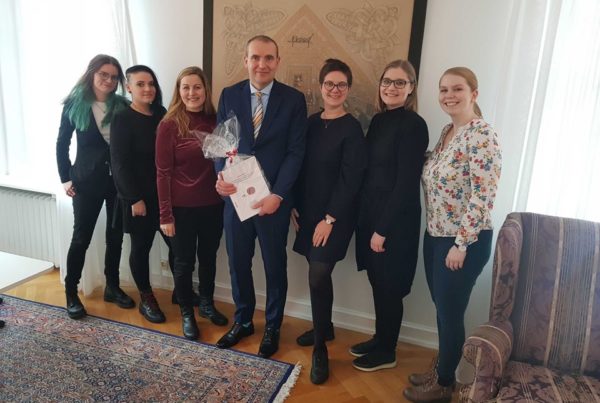Frændur okkar í Noregi bjóða nú upp á geðheilbrigðisþjónustu án lyfjameðferðar. Áhugaverð grein skrifuð af Robert Whittaker sem verður fyrirlesari á ráðstefnun Hugarafls 11. maí um lyfjanotkun.
The Door to a Revolution in Psychiatry Cracks Open
A MIA Report: Norway’s Health Ministry Orders Medication-Free Treatment
Åsgård psychiatric hospital in Tromsø, Norway is a rather tired-looking facility, its squat buildings mindful of institutional architecture from the Cold War era, and in terms of its geographic location, it could hardly be located further from the centers of western psychiatry. Tromsø lies 215 miles north of the Arctic Circle, with tourists coming during the winter months to catch a glimpse of the Northern Lights. Yet it is in this remote outpost, on a hospital floor that had been closed but was recently refurbished, that one can find a startling sign on the door to the ward: medikamentfritt behandlingstilbud.
The translation to English: medication free treatment. And this is an initiative that the Norwegian Ministry of Health ordered its four regional health authorities to create.
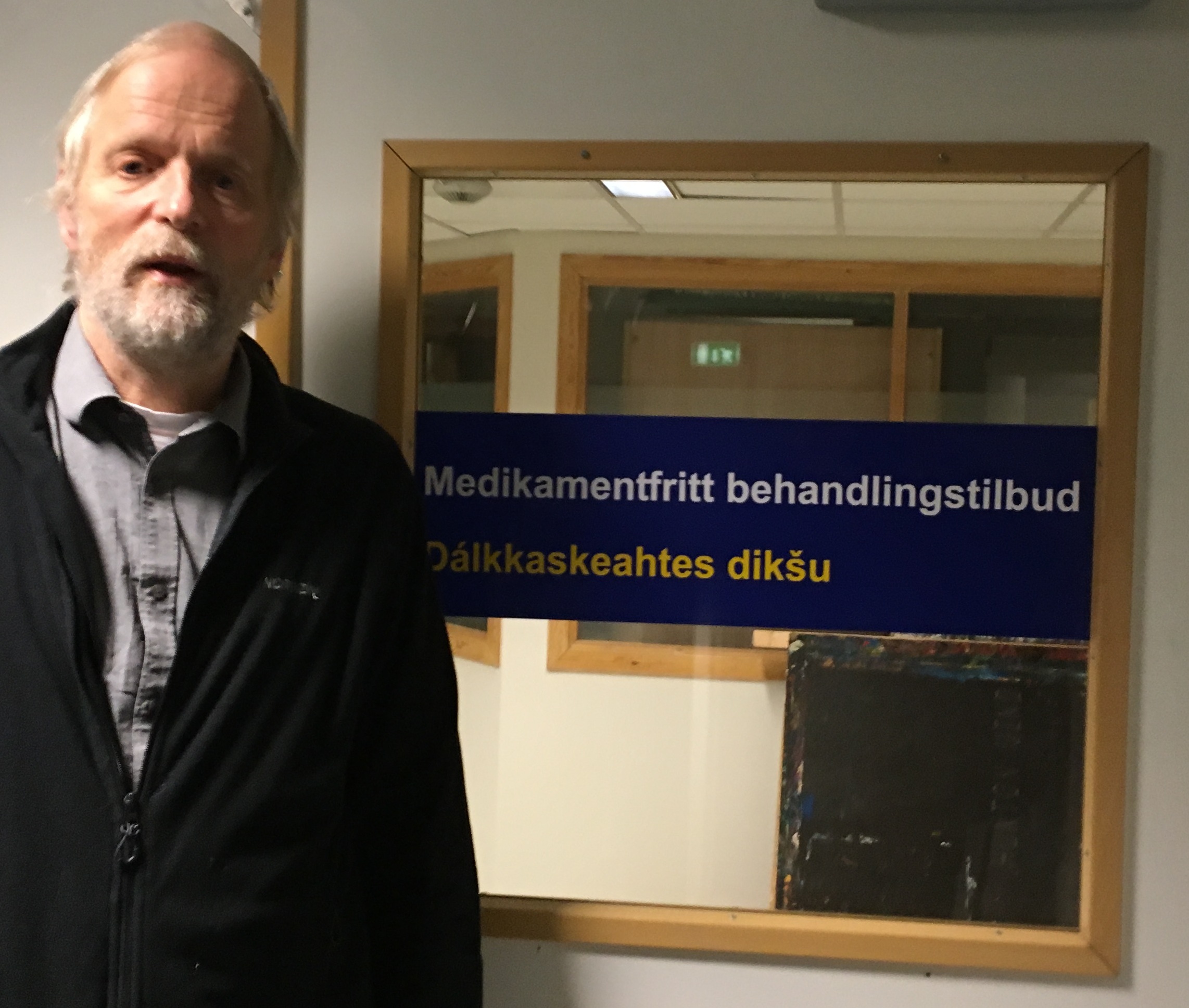
The title—medication free treatment—does not precisely capture the nature of the care provided here. This is a ward for psychiatric patients who do not want to take psychiatric medications, or who want help tapering from such drugs. The governing principle on this ward, which has six beds, is that patients should have the right to choose their treatment, and that care should be organized around that choice.
“It is a new way of thinking,” said Merete Astrup, director of the medication-free unit. “Before, when people wanted help, it was always on the basis of what the hospitals wanted, and not on what the patients wanted. We were used to saying to patients, ‘this is what is best for you.’ But we are now saying to them, ‘what do you really want?’ And they can say, ‘I am free; I can decide.’”
This ward, while located far from the centers of power in western psychiatry, can be seen as a “beachhead” for dramatic change, said Magnus Hald, chief of psychiatric services at the University Hospital of North Norway. “We have to consider the patient’s perspective as equally valuable as the doctor’s perspective. If patients say this is what they want, that is good enough for me. It’s about helping people move forward in their lives in the best possible way, and we should help people move forward with the use of drugs if that is what they want, and if they want to sing a drug-free song, we should be backing them. We should be making that happen.”
As might be expected, this initiative, which has been long in the making, is roiling Norwegian psychiatry. It is a story of many dimensions: successful political organizing by user groups; pushback from academic psychiatrists; debates about the merits of psychiatric drugs; and an effort—most notably in Tromsø, but in other regions of the country too—to rethink psychiatric care.
“The debate is a lot like what you see when there is a paradigm shift threatening to happen,” Hald said.
The User Voice Is Heard
The Ministry of Health’s mandate for medicine-free treatment resulted from years of lobbying by five user organizations, which came together in 2011 to form Fellesaksjonen for Medisinfrie Behandlingsforlop (Joint Action for Drug-Free Treatment in psychiatry). What is particularly remarkable about this mandate is that it required the health ministry to override the objections of a medical profession and listen instead to a group of people that usually have little political standing in society.
When I asked the leaders of the user groups about this, they spoke—with some pride—of a political culture in Norway that strives to be inclusive of all groups. This practice has been evolving for decades, and several referred to a change in abortion law as a bellwether moment in this transformation of their society.
Prior to 1978, a woman seeking an abortion had to apply to a commission of two physicians for permission to end her pregnancy, with the application made by her physician. If married, the woman’s husband had to consent. However, with a strong feminist movement pushing for change, that year Norway passed an Abortion on Demand law, which gave the woman the right to make this choice.
That same year, Norway passed a Gender Equality Act, which stated that women and men should be given equal opportunities in education, employment, and cultural and professional advancement. Today, gender equality laws require that each gender represent at least 40% of the members of official committees, the boards of public companies, and local governmental bodies. In a similar vein, labor unions remained strong in Norway, and today businesses are expected to hold yearly meetings with their employees to discuss their operations and how they might be improved.
All of this tells of a country that was intent on creating a society where the voices of all its citizens could be heard, and this ethic spilled over into health care. It became customary for hospitals and other health care providers to set up “user councils,” with the understanding that “users should have a voice and should be listened to,” said Håkon Rian Ueland, leader of We Shall Overcome, a psychiatric survivor group. “And this isn’t only in psychiatric care. Users and the relatives of users in all areas of medicine should be listened to.”
While this provided fertile soil for the rise of user groups in psychiatry that would have access to politicians and the health ministry, their potential political power was mitigated by the fact that the various groups had different philosophies about psychiatry and the merits of its treatments. On the one hand, there was We Shall Overcome. Founded in 1968, it is best described as a psychiatric survivor group, intent on fighting—as its name indicates—for the civil rights of “ex-patients.” On the other hand, there are more moderate groups like Mental Helse, which, with its 7,500 members, is the largest mental health organization in Norway. For the longest time, these differences made it difficult for the user groups to successfully lobby the government for change.
“We don’t agree on anything,” said Anne Grethe Terjesen, leader of LPP, a national association for families and “carers” in mental health. “So the government says, ‘you want this, but there are others that want that.’ This allowed them to ignore us.”
However, during the past 15 years, all of the user groups watched with dismay as one particular aspect of modern psychiatry—an increase in forced treatment—took hold in Norway. At least one study found that Norway has the highest rate of forced treatment of any country in Europe, and such compulsory orders regularly follow discharged patients into the community, which user groups see as both shameful and horribly oppressive. Today, outpatient teams come to a person’s home to ensure compliance with an order to take medication, which can be for “life,” the leaders of the user groups said.
“That’s the problem,” Terjesen said. “Once they have documented that you have to use the medication, it is very, very difficult to come off that order. If you say you don’t want it, you can complain to a commission, but most lose there.”
Added Per Overrein, a leader with a user group called Aurora: “I have never heard of a patient winning” at a hearing.
In 2009, Grete Johnsen, a long-time mental health activist, joined with other activists to write a manifesto for change titled Cooperation for Freedom, Safety and Hope. “We wanted to create an alternative to psychiatry,” she said. “We wanted to create something of our own. Our goal was to create a place, or a center, with freedom and without forced treatment, and without medication being the center of care.”
In fairly short order, five diverse organizations joined together to lobby for such change. Much like Mental Helse, LPP is a more moderate organization. Aurora, We Shall Overcome, and White Eagle all come more from the psychiatric-survivor end of the spectrum.
“The groups are very different, and so it took quite a bit of discussion about how to say things, and how to come across to different levels of government, and how to pick the best person to come across with a united, unified message,” Ueland said.
Although the groups were focused on ending forced drug treatment, they didn’t think that they could achieve that goal, and so they focused on getting the government to support “medication free” treatment for those who didn’t want to take the drugs. This was not such a radical request, as it fit with the principle that hospitals and other health care providers should listen to “user” groups and develop care responsive to their wishes. Starting in 2011, the health minister began publishing a “letter” each year telling the country’s four regional health authorities to set up at least a few beds that could provide such care. Yet, year after year, the minister’s letters were regularly ignored by the four authorities, Terjesen said.
“They wouldn’t listen. The hospitals weren’t doing anything. Nothing happened. We were very frustrated. No one in Norway cared.”
And then, she said, “something happened.”
The “something” was a cascade of negative news about the state of psychiatry in Norway. There were stories about “illegal things happening in psychiatric wards,” and how “belts were being used so much more often,” Ueland said. A study reported that forced treatment was 20 times more common in Norway than in Germany. And outcomes for psychiatric patients weren’t particularly good, either.
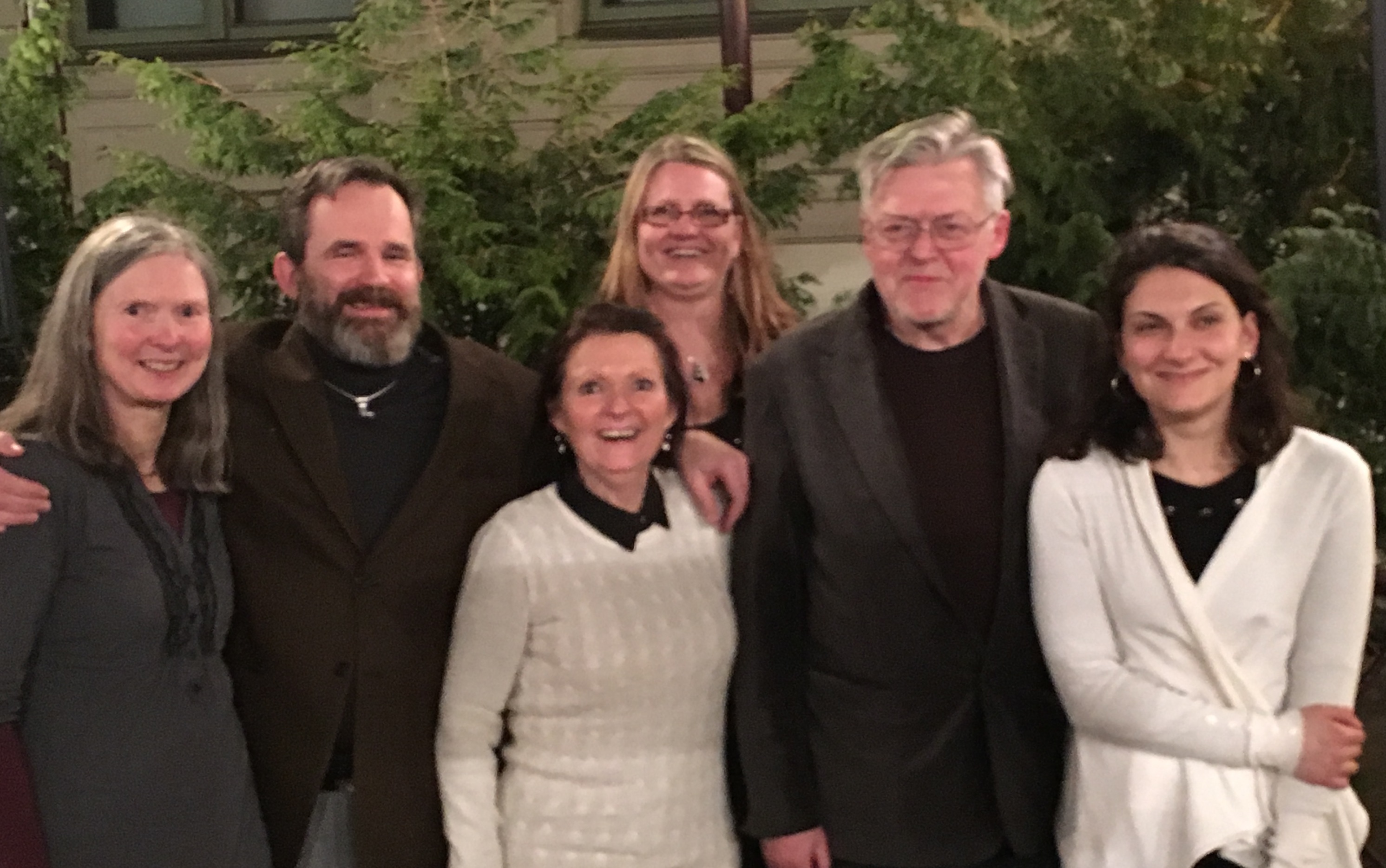
“We were lucky,” Terjesen said. “Treatment was not good. If treatment had been very good, it would have been more difficult. But everything coming from the government now was that we do not have good results, people are dying early, we are using much money, the users are not satisfied, the whole package is not good. The minister says we cannot have this.”
On November 25, 2015, the Norwegian Health Minister, Bent Høie, issued a directive, which effectively transformed the “recommendation” contained in previous letters into an “order.” The country’s four regional health authorities, in “dialogue with user organizations,” needed to create a plan for “treatment measures without drugs.”
“Many patients in mental health care do not want treatment with medications,” he wrote. “We must listen to them and take this seriously. No one will be forced to take medication as long as there are other ways to provide the necessary care and treatment. I think the creation of drug-free treatment is too slow, and have therefore asked all the regional health authorities to have established this offer (of drug-free treatment) by 1 June 2016.” In addition, he said, the authorities should offer “a planned reduction of drug therapy for those patients who want it.”
The health ministry had put its stake in the ground. This initiative fit in with a larger goal that Høie had set in one of his earlier letters. “We will design a health care system that puts the patient at the center . . . it involves giving them rights . . . Patients’ rights are to be strengthened.”
The Resistance from Psychiatry
The leaders of Fellesaksjonen speak today about how this was a “brave” thing for Høie to do, and how it showed that he was “a listening person.” But they also knew that this mandate, which raised questions about the merits of antipsychotics and other classes of psychiatric drugs, would stir opposition from many corners of psychiatry, which proved to be the case. No regional authority met the June 1, 2016 deadline, and in many corners of Norwegian psychiatry, psychiatrists spoke out in fierce opposition to it. Tor Larsen, a professor of psychiatry at Stavanger University, publicly derided it as a “giant mistake.”
“Drug free treatment is not only a bad idea, but simply may end up being an introduction of systematic malpractice in Norwegian psychiatry. At worse, lives lost,” he wrote. “The most seriously ill often lack understanding of their disease . . . (they) do not see themselves as sick. The freedom of choice the health minister now wants to impose will thus lead to a lot of very seriously ill people being deprived of the right to the best possible treatment.”
This was the core argument repeatedly made by psychiatrists against the initiative: the drugs were effective; there were no non-drug treatments that had been shown to be effective for psychosis; and patients who didn’t want the medications didn’t understand that they were ill and needed the medications.
This initiative will “create an attitude that largely supports a pronounced skepticism about drug therapy,” wrote Jan Ivar Røssberg, a professor of psychiatry at Oslo University, in Aftenposten, Norway’s largest newspaper. “My fear is that the measure will mean that people with psychotic disorders come later to optimal treatment that you know works . . . I cannot be responsible for the teaching of psychiatry at the University of Oslo that would support this development” of medication-free treatment.
The debate has continued since then, and even after Tromsø opened its medication-free ward in early January, there remained considerable question of whether other regional authorities would comply with the spirit of the health ministry’s directive. The Norwegian Psychiatric Association, for its part, officially decided to “keep an open mind,” and address the topic at its annual meeting. “Do antipsychotics work?” wrote Anne Kristine Bergem, president of the association. “Or do they not have the effect we have been led to believe?”
The Donald Trump of Antipsychiatry
The association had identified the scientific question at the heart of this initiative. Forced treatment meant forced use of antipsychotics, and with the controversy ongoing, a non-profit organization, Stiftelsen Humania, joined with Fellesaksjonen to organize a public debate on this initiative, which was held on February 8 in Oslo. They titled it: “What is the knowledge base for treatment with or without the use of psychotropic drugs?”
“I would like to see this argued,” Ueland said, in the afternoon before the debate. “They say they want proof that alternatives work. I say, ‘why don’t you provide proof that your treatment works? I have read a lot of articles and a lot of books, and I still have not seen proof that your drugs work. I have seen proof that they make people feel ill, that they take away their emotions, that they treat symptoms, but give me proof that they work on psychosis, that they work on what they call schizophrenia.’ I want to see that before they sit there and tell us that we can’t have drug-free treatment.”
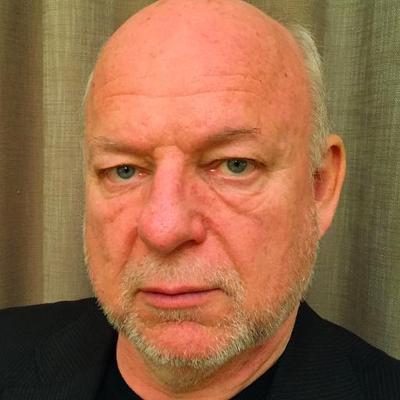
The leader of Stiftelsen Humania is Einar Plyhn, a businessman whose company, Abstrakt Forlag, publishes academic texts. He came to this battle after suffering the loss of both his wife and son to suicide, neither of whom had found relief from psychiatry. “My experiences as bereaved by suicide two times brought me into a psychiatric ward myself, where the only treatment I got was medication and ECT,” he said. “After finally getting off all the meds, I started to publish books critical of psychiatry, and arranging conferences.”
One of the books he published was a Norwegian translation of Anatomy of an Epidemic. In that book, I had written about the long-term effects of antipsychotics (concluding that the research showed that, on the whole, they worsen long-term outcomes), and so Plyhn had asked that I speak at this debate. The other speakers were Ueland, Røssberg, and Jaakko Seikkula, who presented on Open Dialogue Therapy in northern Finland (where psychotic patients are not regularly placed on antipsychotics). Magnus Hald was part of the panel.
The debate took place at the Litteraturhuset in Oslo, and a half hour before the auditorium doors opened, there was a large crowd of people waiting to get in, evidence of how the medication-free initiative had stirred up considerable public interest. The auditorium quickly filled, with the overflow crowded into an adjacent room, where they could watch the debate on video, which was being streamed on the Internet. The audience included mental health professionals, members of user organizations, and one or more representatives from the pharmaceutical industry.
Ueland spoke first, reading a powerful blog from a 25-year-old woman in a locked ward who described the trauma of being forcefully treated. Then it was Røssberg’s turn, and, it’s fair to say, he came ready to do battle.
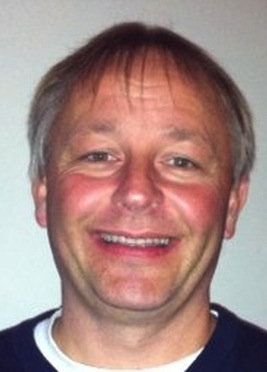
Røssberg said that three of the user groups were “antipsychiatry” organizations; argued that there were no non-drug therapies that had been proven to be effective as short-term treatments for psychosis; and criticized Seikkula’s published articles on Open Dialogue as scientifically worthless. He described me as the “Donald Trump of Antipsychiatry,” and while I wasn’t quite sure of the analogy being made, everyone understood it wasn’t a compliment. He then pointed to Norway’s TIPS study as proof that antipsychotics provided a long-term benefit.
This study was designed to test the benefit of early detection of a “first-episode of nonaffective psychosis.” One cohort had a “duration of untreated psychosis” of 5 weeks before entering treatment, versus 16 weeks for the comparison group. Both cohorts were treated conventionally with antipsychotics, and then followed for 10 years. At the end of that time, among the patients who were still alive and in the study, 31% in the early-treatment group were in recovery, versus 15% in the 16-week cohort. If antipsychotics worsened long-term outcomes, Røssberg argued, then the early treatment group—because they had 11 weeks of additional exposure to antipsychotics—should have fared worse.
“If you take a pill that shows you get a poor prognosis, then if you have an earlier start with a pill, you should have a worse outcome. Is that clear?” he said.
I presented next, recounting the history of science I had published in Anatomy of an Epidemic (and since updated), and then Seikkula reviewed the Open Dialogue program, with its good long-term outcomes. The panel debate was mostly more of the same, with Hald adding his thoughts to the mix. He raised a question that would seemingly resound with every psychiatrist.
“There are many patients that psychiatry doesn’t think need the medications,” he said. “But we don’t know who they are. And since we don’t know who they are, we could choose not to give anyone medication, or we could choose to give everyone medication. Psychiatry chooses to give everyone medication. We give neuroleptics to people that we see do not get better with their psychotic symptoms. But they still keep getting neuroleptics. So how come they keep getting neuroleptics if they don’t get better?”
Afterwards, I asked Plyhn his thoughts about the debate. I was a little dispirited, in large part because I thought it had shown once again how difficult it is to have a public discussion about the merits of psychiatric drugs, but Plyhn took a longer view. Shifts in societal thinking—which is necessary for this medication-free initiative to gain public support—come slowly.
“My impression is that there is a growing concern among some psychiatrists, psychologists and nurses regarding how evidence-based the expanding use of psychotropic drugs actually is,” he said. “The conferences we have had will hopefully contribute to some rethinking” of their use.
The TIPS Study in Review
After the debate, I did regret that I hadn’t found the time to discuss the TIPS study in detail, given that Røssberg had presented it as evidence of the long-term effectiveness of antipsychotics. The study had been designed to assess the effectiveness of early treatment, rather than the long-term effects of such drugs, and although there were patients in both cohorts who stopped taking antipsychotics, there had been no reporting of 10-year outcomes grouped by medication use. There also was reason to question whether the early-treatment group had better outcomes. The comparative group was older and more severely ill at baseline, yet their symptomatology was similar to the early-treatment group at 10 years and a higher percentage in this group were “living independently” at the end of the study. But more to the point, the outcomes in the early-treatment group, which emphasized immediate and long-term use of antipsychotics, didn’t tell of an effective form of care.
This was a study of younger patients experiencing a first episode of psychosis, and often such episodes may clear up on their own with time. There were 141 patients in the early-treatment group, and at the end of 10 years, here were their collective outcomes:
- 12 had died (9%)
- 28 had dropped out and were lost to treatment (20%)
- 70 were still in the study and had not recovered (50%)
- 31 were still in the study and had recovered (22%)
In other words, once the outcomes for the patients who died or were lost to treatment were added to the findings, nearly 80% hadn’t fared well (if being lost to treatment is seen as a poor outcome.) This outcome stands in sharp contrast to longer-term outcomes with Open Dialogue therapy in northern Finland, where at the end of five years 80% are working or back in school, asymptomatic, and off antipsychotics. I wished that I had prepared a slide comparing the two, and asked the Norwegian audience which of the two programs they preferred to embrace.
That data alone would have made for a more interesting public discussion, but then, a few weeks later, a study was published that added new information about the TIPS study. In order to gain insight into the recovery process, TIPS researchers—a team that included Tor Larsen from Stavanger University—interviewed a sample of 20 “fully recovered” patients from their program. While many of the 20 said they thought antipsychotics were helpful during the acute phase of treatment, long-term use was “considered to compromise the contribution of individual effort in recovery,” and was “perceived to reduce likelihood of functional recovery,” the researchers reported.
Seven of the 20 fully recovered patients had refused to take antipsychotics from the beginning, and thus had “never used” the drugs. Another seven had stopped taking them, meaning that 14 of the 20 fully recovered patients interviewed for the study were off antipsychotics. Røssberg had cited the TIPS study as evidence that argued against the medicine-free initiative, but this outcome data told of “full recovery” in patients treated initially without antipsychotics and in patients who tapered from the medications, the twin forms of care that the initiative is meant to provide.
Rethinking Psychiatric Drugs
As the debate revealed, the implementation of the Health Ministry’s medication-free directive is in flux. In Tromsø, where Magnus Hald is the director of psychiatric services, the regional health authority has opened a ward dedicated to such care. In the rest of the country, the regional health authorities are setting aside individual beds for medicine-free care, and mostly reserving the six beds for non-psychotic patients, which means that the initiative isn’t serving as an alternative to forced treatment with antipsychotics.
Even so, the directive is a mandate for change, and the day after the debate, I drove with Einar Plyhn and Inge Brorson, one of the board members of Stiftelsen Humania , to Lier Hospital, 25 miles southwest of Oslo, to meet with the group at Vestre Viken Trust developing medicine-free treatment for the Southern and Eastern Regional Health Authority. Brorson used to work at the trust, which operates several psychiatric hospitals and provides services to a region with about 500,000 residents (about 1/10th of the Norwegian population), and he had helped stir up interest in the initiative by encouraging the psychiatrists and clinical staff there to investigate the medical literature regarding the long-term effects of psychiatric drugs.
Psychologist Geir Nyvoll, who led the meeting, began by referring to this body of scientific research. He had taken a four-month leave from work to closely study the research literature for neuroleptics, and then he and psychiatrist Odd Skinnemoen had presented their findings to the clinic. “Knowledge and awareness is the foundation of change,” he said. “This is where we are.”
As a first step toward creating such change, the trust is developing a “continual improvement program,” which it has titled “Right and Reduced Use of Medications.” Under the program, staff will prescribe psychiatric drugs in lower doses; carefully monitor drug side effects; avoid the use of medication when “treating normal problems in life, such as for negative life events;” and discontinue medications when they aren’t producing a good effect.
In response to the health minister’s directive, the trust has set up one medication-free bed at Lier Hospital for psychotic patients, and five such beds at two other hospitals for patients with less severe disorders. The trust is embracing the principle that “patients should have the right to choose treatment without medication,” said psychiatrist Torgeir Vethe.
“Every patient should have that possibility. And if a patient does not want to use medication, we should give the best help we can, even though we as professionals might say the best treatment is if you use medication.”
With these two “parallel” efforts now underway, the trust is organizing a research program to assess their effectiveness. The hope is that this will provide a better “evidence base” for the medicine-free initiative, and for “shared decision-making” with patients. “So we are wondering, are we on the threshold of something new?” asked psychologist Bror Just Andersen.
The trust has already developed a research record for what it calls basal exposure therapy, which it introduced in 2007 with the goal of reducing polypharmacy in “treatment resistant” patients. The belief behind this therapy is that hospitals “over-regulate” psychiatric patients, which means that staff are constantly controlling their behavior and helping them to avoid situations that provoke an “existential catastrophic anxiety,” said psychologist Didrik Heggdal. With basal exposure therapy, the goal is the opposite. They “under-regulate” the patients, forcing them to seek out staff when they want help and encouraging them to confront their existential anxiety.
“We give the patient freedom,” Heggdal said. “The level of control is extremely low at the ward. We treat the patient as an adult, as an equal and with the respect for a person who is there to work with himself or herself. We are there to assist them in this work with themselves. And when we do this, they mobilize their resources. We shouldn’t be surprised.”
In a study of 38 patients treated with basal exposure therapy (14 of whom had a schizophrenia spectrum diagnosis), their use of antipsychotics and other psychiatric drugs notably declined over the course of 13 months. Nine of the 26 who came into the study on antipsychotics were off such drugs by the end; 7 of 10 on mood stabilizers (antiepileptics) successfully discontinued those medications.
Vethe, Andersen, Heggdal and others spoke of how they thought they were entering a new era of care, which presented both opportunities and challenges. The challenges were familiar ones: colleagues who were skeptical of what they were doing; societal expectations that they use antipsychotics to handle “violent” patients; and worries that if they didn’t follow accepted standards of care and something went wrong, they could end up in trouble with regulators. Their concerns were many, but the bottom line, several said, was that they felt they were approaching “new and better times.”
“I have been in this business for 35 years as a clinical psychiatrist and director, and I am very grateful that I can take part in the change that is slowly coming to psychiatry now, because it was really, really needed,” said psychiatrist Carsten Bjerke, chief medical officer of Blakstad Psychiatric Hospital.
A Paradigm Shift in Full Swing
During the last few years, the Open Dialogue program in Tornio, Finland has come to be seen in the U.S. and other countries as a therapy that offers the promise of treating psychotic patients in a new way, which can lead to much improved long-term outcomes and involves prescribing antipsychotics in a cautious, selective manner. Perhaps not surprisingly, Magnus Hald’s thinking and beliefs—and thus the ideology present on the Tromsø ward for medication-free treatment—are closely aligned with the Open Dialogue approach.
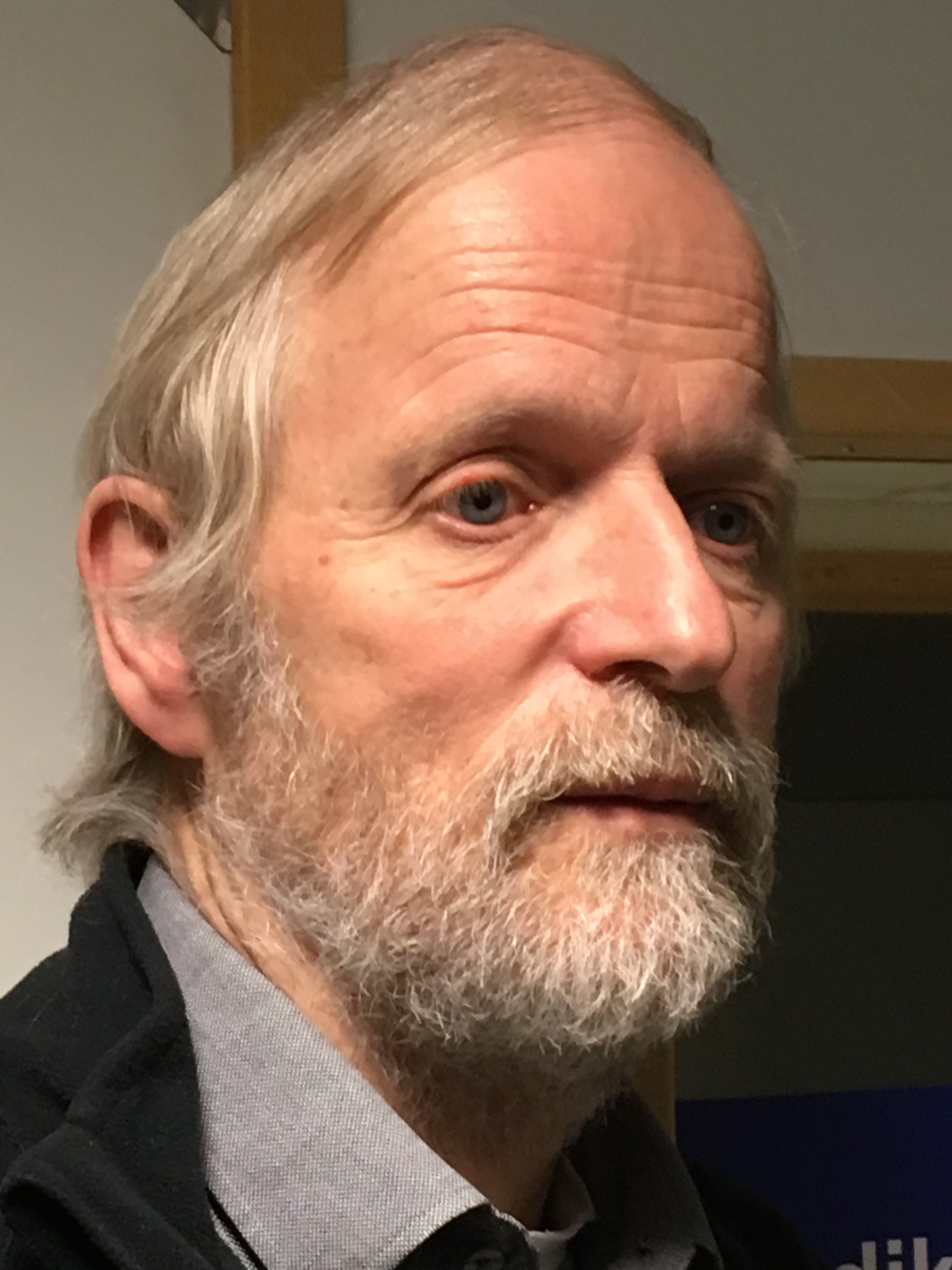
Hald was close friends with Tom Andersen, a professor of social psychiatry at the University of Tromsø who is often remembered today as a founder of “dialogical” and “reflective” processes. They began working together in the late 1970s, and as they developed “reflective teams,” they incorporated the Milan approach to family therapy—which involved “systemic thinking and practices”—into their work. A key principle of this approach, Hald has written, is that “people change according to circumstances around them, and important parts of these circumstances consist of their family life in the local community.” The two traveled widely, teaching their new ways, and during the 1980s, they developed a relationship with Jaakko Seikkula and the Open Dialogue team in Tornio, Finland.
In subsequent years, the Finnish group was better able to document their outcomes with dialogical practices because they believed in psychiatric diagnosis, or at least believed in the use of DSM III diagnoses for reporting outcomes, whereas the Tromsø group did not, Hald said. In Tromsø, they also didn’t focus as much on limiting the use of antipsychotics, even though Andersen became “more and more opposed” to their use. “In terms of not using drugs, it was difficult to practice, and we didn’t have a real commitment to that part,” he said.
Even so, Hald had seen people with different types of psychiatric symptoms do well without drugs, and it was this past philosophy and experience that made him eager to embrace the health minister’s directive. “For me, it’s a possibility to organize something that is very clear cut. We should give people the possibility to choose not to be treated with neuroleptics when they are experiencing a serious mental problem. I always thought this was a good idea.”
With Hald enthusiastic about the mandate, the Northern Regional Health Authority has given the University Hospital of North Norway an annual budget of 20 million Norwegian kroner ($2.4 million U.S.) to run the six-bed, medicine-free ward at its Åsgård facility. This support allowed Hald and his hospital to start from scratch in hiring staff, with Merete Astrup, a psychiatric nurse, starting work as director of the ward last August. She had always wanted to work in a setting that provided patients with the right to “choose” whether they wanted to take medications, and that attitude is now present with all of the staff, which will number 21 when hiring is complete.
“I am so happy to be here, and know I am working the way my heart wants to work,” said art therapist and nurse Eivor Meisler. “I have been dreaming about working without medications.”
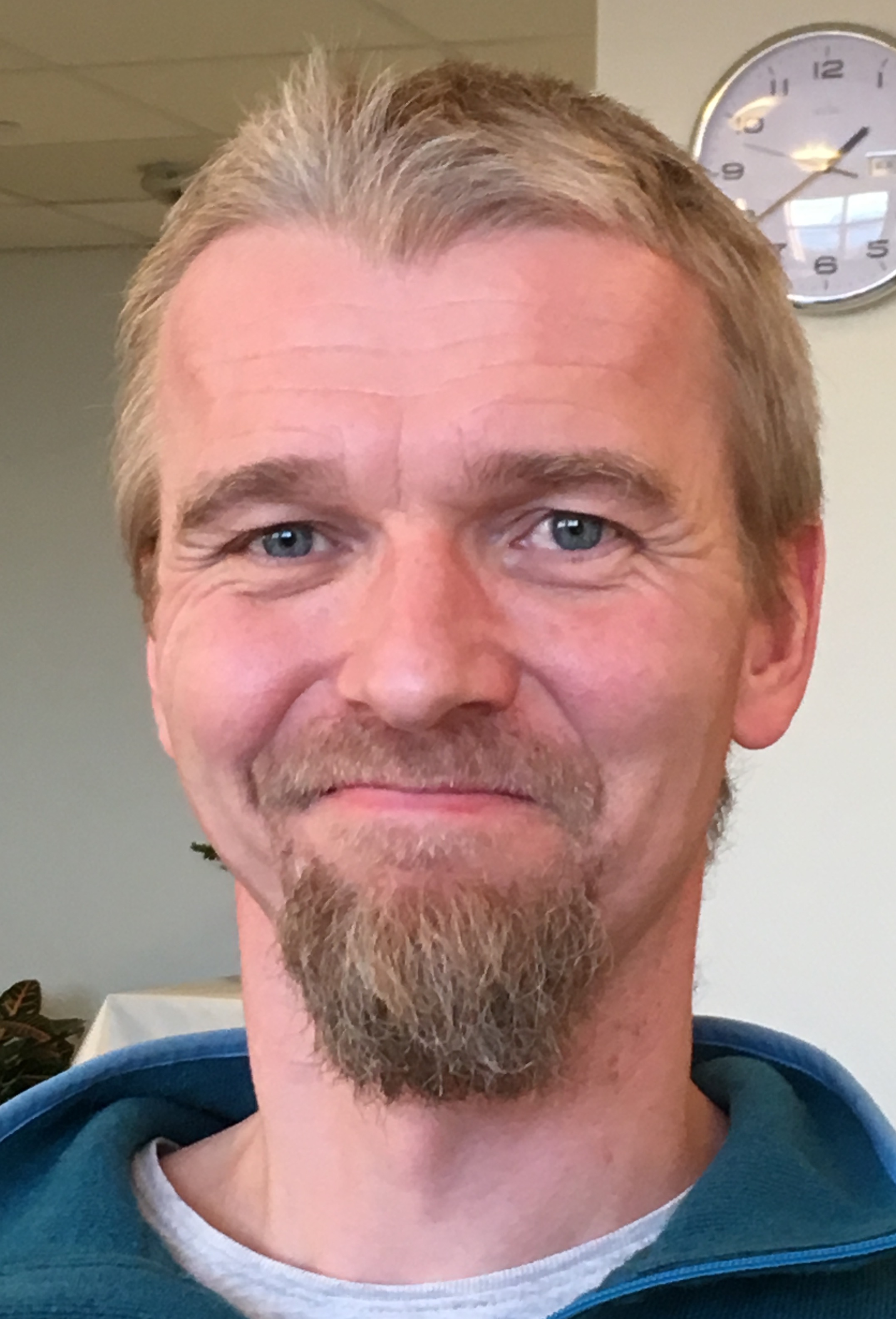
Tore Ødegård, a psychiatric nurse, said that he had grown resistant to working on wards where people were regularly coerced, which is why he jumped at the chance to work here. “I would argue with people to get them to take their drugs. I was a part of that system, and now I am part of a system that does not have as its main purpose to give drugs, but to help people cope with problems, and do so without medication. I find that very fascinating, and it is a privilege to be part of this.”
And then Ødegård shrugged his shoulders: “But we really don’t know how to do this yet. People want to come here to get off drugs, and that can be a struggle, with different problems. The psychiatrist will say, ‘We have not been educated to get people off drugs, just to add drugs.’ We have to experience this, and learn how to get people off drugs.”
One of the staff who has such experience is Stian Omar Kistrand. He struggled with drug addiction from 2001 to 2002, which turned into bouts of mania, depression, suicidal thoughts, and hearing voices. His own path to recovery, he said, came “from searching into my history. I realize that I have to accept everything, and then I wake up one morning, and the world is totally different. I have seen the light about having to accept everything in my past and my life.”
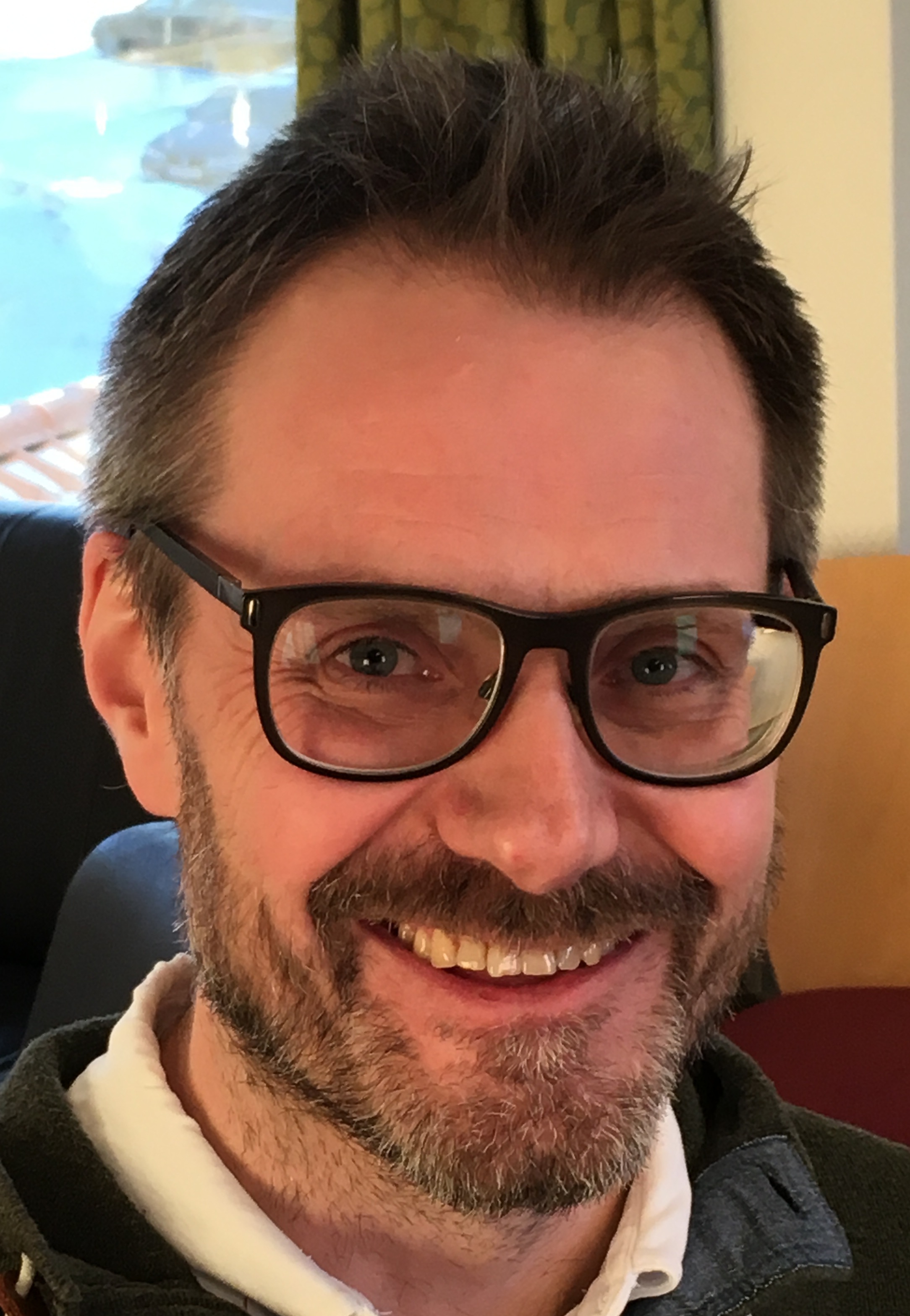
He sees the people coming to this ward through that perspective. “The people who come here don’t want medication. This is their deepest wish. We say, ‘you can come to us, we want you as you are, come to us with your delusions, your illness, your thoughts and feelings and history—everything is good.’ We can meet them as they are. When people experience that, something essential happens. It takes away the mistrust and the fear, and says to the person, this is okay. And then the person can start growing. That is the most important thing.”
The ward is not yet serving as an alternative to forced drug treatment. The patients come here as referrals from other hospitals and psychiatric settings, and they can get transferred here only if they ask for this care and their supervising psychiatrist agrees to it. But once they are here, they are now in a patient-centered environment, which provides them with autonomy. There are no closed doors, and they are free to check themselves out and go home, if that is what they want. And while they are staying here, they can organize their time as they wish. One of the days I was there, the patients took off midday to go shopping in town.
The rooms on the six-bed ward are fairly spartan, each with a single bed and a writing desk, mindful of a dorm room at college. Meals are prepared in a kitchen on the ward and served in a large common room, where people often pass the time talking, the windows framing a soothing landscape of sea and snow-capped mountains to the west. The sun had made its first winter appearance only a week or so before I arrived, and yet the afternoon light now lingered for hours, bathing the mountains in a soft pink glow.
The therapeutic programs make for a day that unfolds in a fairly lazy, gentle way. Reflective therapy sessions, daily walks in the chilled air, and exercise in a gymnasium downstairs are all part of a weekly schedule. As this “therapy” occurs, the patients write up their own accounts of how it has gone, which become part of their health records.
“This gives us much better insight into the perspective of the patient,” said Dora Schmidt Stendal, a psychiatrist nurse and art therapist. “Normally (in past settings), I would write a report of a conversation, and I had thought that I was carrying the voice of my patients, but the voice of patients on their own terms is so different. We have to pay respect to their world when they get a chance to express themselves freely. This documentation makes us more aware of their perspectives.”
The patients also get to see what the therapists write. “You have to think very carefully about what you write,” Stendal said. “Patients may not agree, and then you can have a conversation about it. Their opinion matters. They are being taken seriously.”
Although the staff don’t use DSM diagnoses to describe their patients, the patients do arrive on the ward with such categorizations, and the four that were here when I visited could be described—in DSM terms—of struggling with depression, mania, and bipolar disorder, with one or two having “psychotic” symptoms. One spoke of being a lightning rod for evil in the world, while another told of terrors that come visiting in the night. Three of the four were willing to sit with me and tell their stories.
*****
Merete Hammari Haddad, who is part Sami (the indigenous people of northern Norway), has lived with a diagnosis of “bipolar” for nearly a decade.
For the first part of her adult life, all had gone fairly well. She worked as a teacher and for a time as a school principal, and had earned a master’s degree, her research focusing on how people achieved their highest potential. She got involved in coaching others, residing for a time in Dublin and then Oslo. “I was succeeding,” she said.
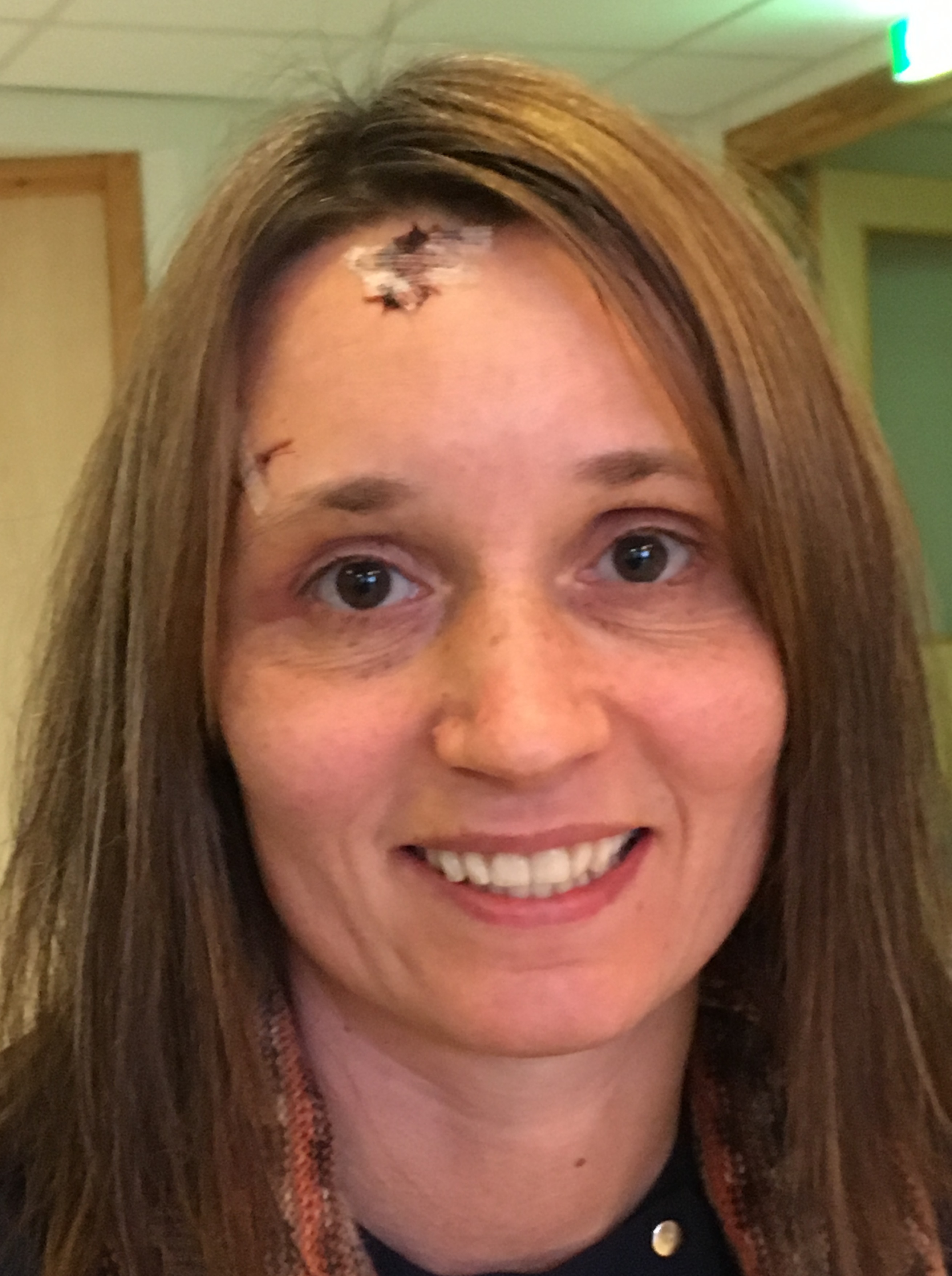
Her husband is also part Sami, and some time ago, they moved back to Alta, a Sami community on Norway’s northern coast. Like many indigenous people, the Sami community has struggled to maintain its culture and self-governance, and when Merete moved back to Alta, she was intent on helping the community become more optimistic and happy. “I came in so cheerful, and I wanted to bring that to my community. But I was naïve. People didn’t want that, and I got attacked. I was so stupid. I turned negative about myself. My husband saw changes in me, only he doesn’t like to talk. I felt alone.”
Eventually, her husband had her hospitalized. She was told she was bipolar and that she would have to take lithium for the rest of her life. “I felt terrible on the drug,” she said. “I had no feelings. It was just like not living.”
Two years ago, she decided that she couldn’t go on like this anymore. “I needed to feel happy again. I wanted to feel glad again. And I accepted my feelings. I knew my sorrows, my fears. When I stopped, I could feel. I could let my tears flow, and I could fill the room with my sorrows. But nobody accepted it. Not my family, not my husband. I just had to trust in myself.”
The time that followed continued to be tumultuous. Her familial relationships, and her relationship to her community, remained strained. Even so, she continued thinking about how she could help “people realize their human potential,” and this past December, she started a company to pursue that end, obtaining a government grant of 100,000 kroner to do research on the topic. But as she pursued this business, her isolation from her husband grew. In late January, her husband concluded that she “was too enthusiastic,” and had her hospitalized.
“I was taken away with force in handcuffs,” she said. “And all I got was medicine, medicine, and they forced me.”
However, after a little more than a week in that first hospital, she successfully lobbied to be transferred to the medicine-free ward in Tromsø. After five days here, during which time she and her husband had confronted their problems, she was going home.
“My husband and I are so aware now of what was wrong. We found a new direction together. We were here to have a new dialogue, and now we have a new direction on how we want to be in the future.”
In dialogical terms, her distress had been caused by the “spaces in-between” her and her husband, and thus relief from that stress required mending that space, as opposed to fixing her brain chemistry. “I just needed a bed, food, and care,” she said. “Here I’ve been seen, I’ve been heard, and I can talk about everything. They never said I was sick. Now I don’t feel like there is something wrong about being human.”
*****
When I was first introduced to Mette Hansen, during a group discussion in the common room, she had, with an impish grin, asked me a question that has stayed with me ever since. “When you look into the mirror,” she said, “what do you see?”
That’s a fascinating question for anyone to ask, and I thought it told of a sense of freedom that she had found from being on the ward. She could speak her mind here.
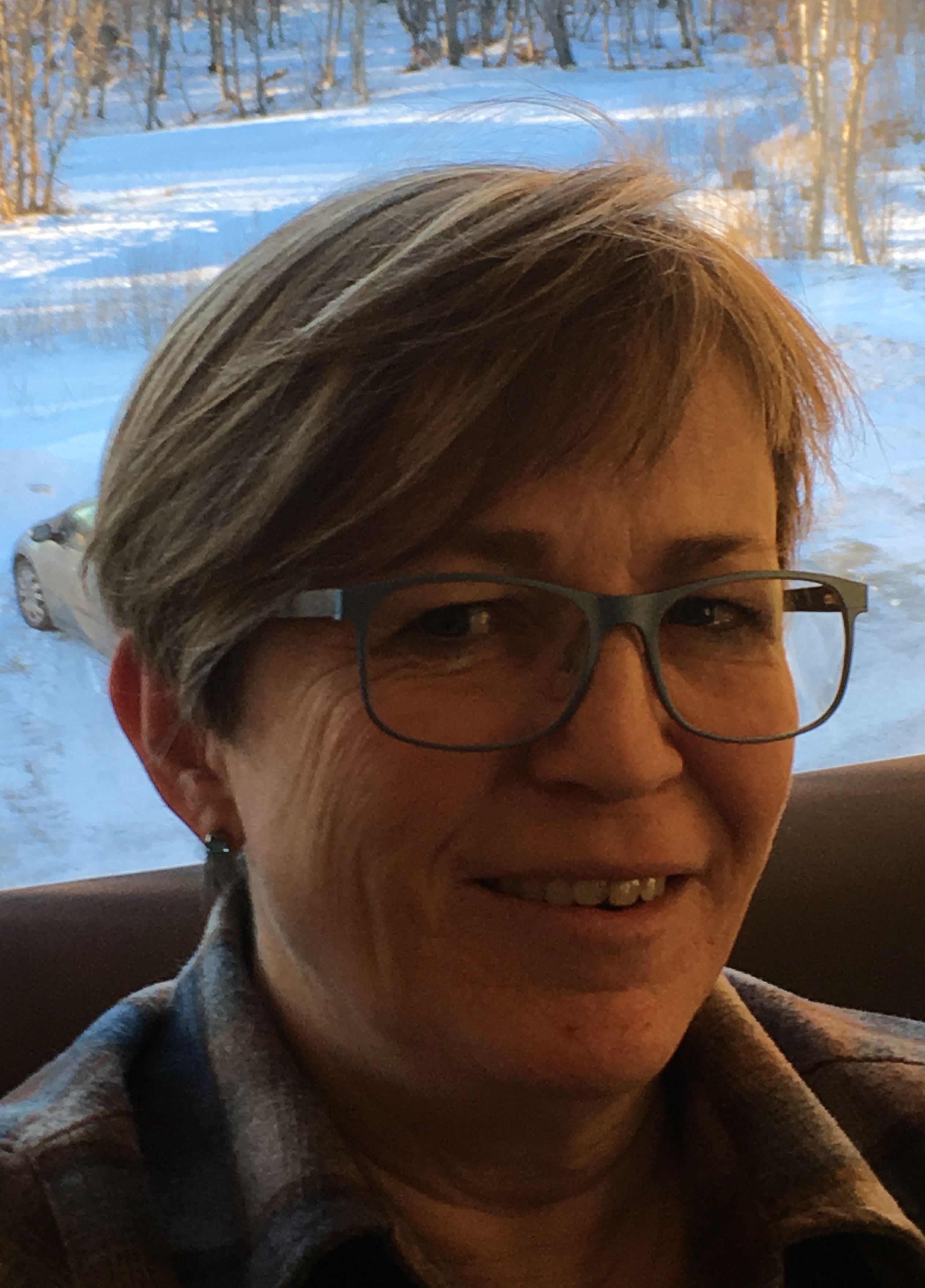
She had been first diagnosed with bipolar in 2005, when she was 40 years old and overwhelmed with work and—as a mother of three—family obligations. “I had no time for myself,” she explained. “I couldn’t do what people wanted me to do.”
She found lithium helpful, as it calmed her down. After a time on sick leave, she went back to work in a grocery store, and her life remained fairly stable for years. But then, in 2015, she was diagnosed with breast cancer, and after she had surgery, she spent several months struggling to sleep. In December of that year, she “got crazy again,” which led to another stint in a hospital. Then last September, with the side effects from the lithium piling up—weight gain, swollen hands, shaking, and thyroid problems—she decided she would like to taper off the medication.
This was a dramatic step for her to take. Her husband and her family didn’t want her to attempt this, because the drug was “working,” but she needed to take control of her life. “I said, after 12 years on lithium, I have to try this. I am my own boss, and if my husband can’t accept this, it’s his problem.”
The ward, she said, was giving her “quiet” and helping her stay safe as she tapered from the lithium. “I don’t have to care about my neighbors or my family back home. I can talk about different things, the illness and how to behave. Merete (Astrup) is the first who met me with politeness. It’s something different, and that is really nice. I love it here.”
Now that she was down to ¼ the dose of lithium that she had been on in September, she was also beginning to question whether such a powerful drug had been so necessary. “I am a little bit higher. I call it magic. Lithium is like wearing a life jacket when you are on a mountain trip and you are not going fishing. Why should you have a life jacket? Maybe you need a sleeping bag, or some wood.”
As she looks to the future, she now sees this ward as a refuge, one that she could return to if, after going back home, she struggled again. “It’s important knowing that I could come back here and decide for myself what to do,” she said.
*****
Much of my time with Hanna Steinsholm was spent discussing her love for music, and our shared memory of reading Jack Kerouac’s On the Road, and thoughts about Sal Paradise and his manic friend, Dean Moriarty. “I love the illustration of mania,” she said at one point. “There is a lot of pain and tears to go for what you aim for. There is always dark in the light.”
Her entry into the psychiatric system had come as a child, when she was diagnosed with ADHD, and also had conflicts with other youth in her small town. “I was made fun of when I was a kid. I felt something was lacking in me when I was a teenager.” She subsequently was given other diagnoses, and she struggled in multiple ways: self-harming, fighting with thoughts of evil and with feelings of anxiety about making it in the world as a folk singer. “I always thought people expected me to write a song that would blow them away.”
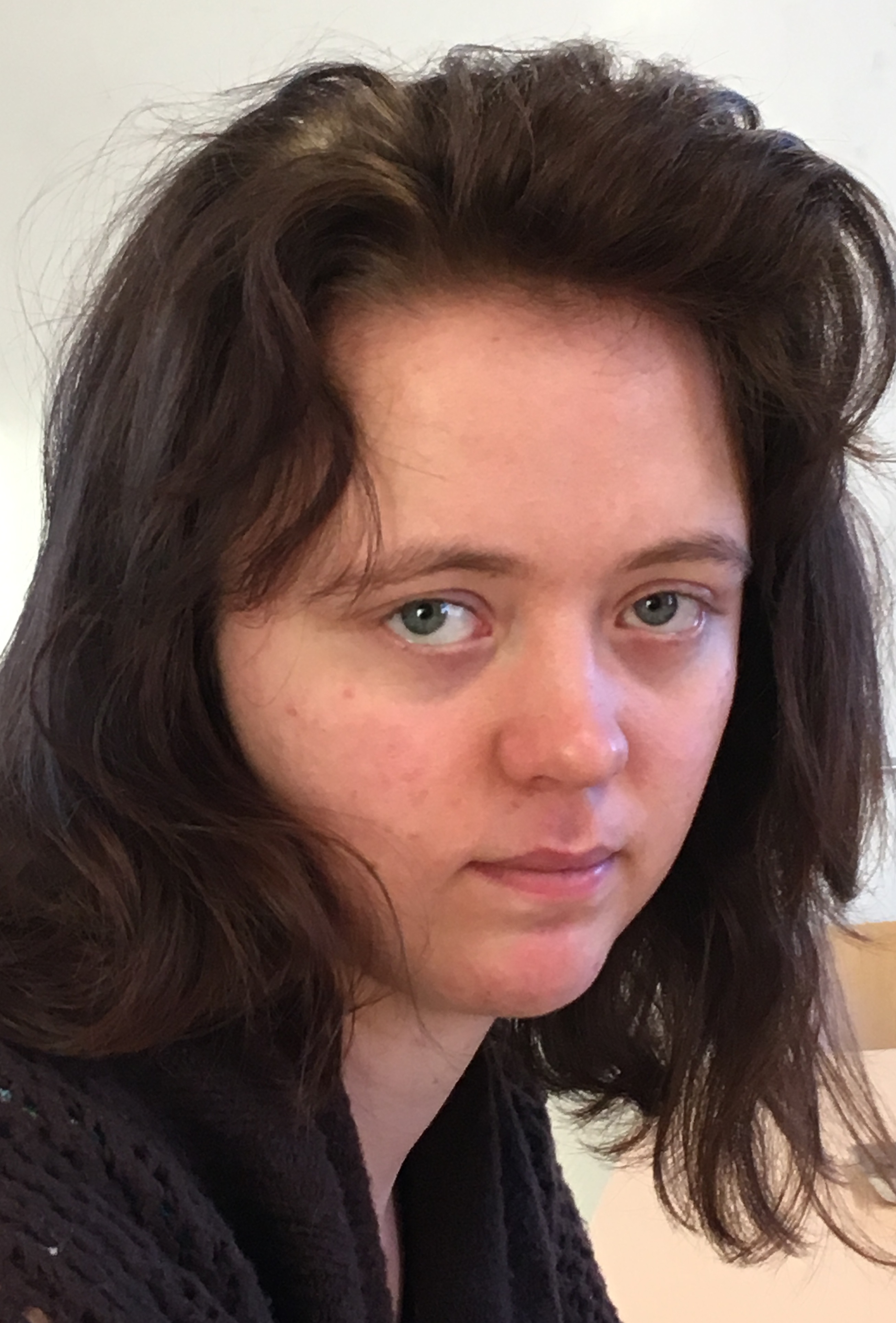
She felt it was important that she could be here without having to take Abilify, the antipsychotic drug she had been on. She needed some structure, and help with her self-injurious behaviors.
“Being on Abilify was boring and gave me a feeling of hopelessness, and I didn’t want to do that. I couldn’t think on the drug. And if I am going to be in the world, I have to be smart and be a version of me that people like. People know that I am sick. I have to prove that I can make something out of the destruction, and make something big out of it.”
She had been on the medicine-free ward for several weeks, and there was no real timetable for her to leave. “I have found it better than I thought I would. It is easy to go with the flow, and not have them question you all the time, like they do in other hospitals, and with their suspicions of you, thinking you will become a killer. This is taking some time to accept, that I won’t be questioned all the time.”
And then we returned to speaking about the escapades of Sal Paradise and Dean Moriarty, characters in a novel published 60 years ago and yet one that somehow remained so vivid in both of our memories.
The Challenges to Come
Such are accounts from the first few patients to be treated on this “medication-free” ward. But if this effort in Tromsø is going to have an impact in the larger world of psychiatry, their patient outcomes will need to be tracked and reported on in medical journals. A plan for doing such research is still being drawn up.
It won’t be possible to do a randomized trial, noted psychologist Elisabeth Klaebo Reitan. As such, they will mostly need to rely on periodic interviews, which “describe who are the people who are getting treatment” and provide follow-up snapshots of “symptoms, functioning, and social activity, and other recovery measures” over periods of five and ten years. In a sense, the bottom-line outcome will be whether they can “make changes” in their lives, she said.
Skeptics of Norway’s medicine-free initiative are already raising questions about the types of patients who will be treated in the Tromsø ward (and in the other medicine-free beds being set up in the country). The thought is that they will be patients who are “less ill” and without the behavioral problems—violent behaviors, and so forth—that “require” the use of antipsychotics. A medication-free ward can’t present itself as a true alternative to forced treatment unless it can take on more difficult patients too.
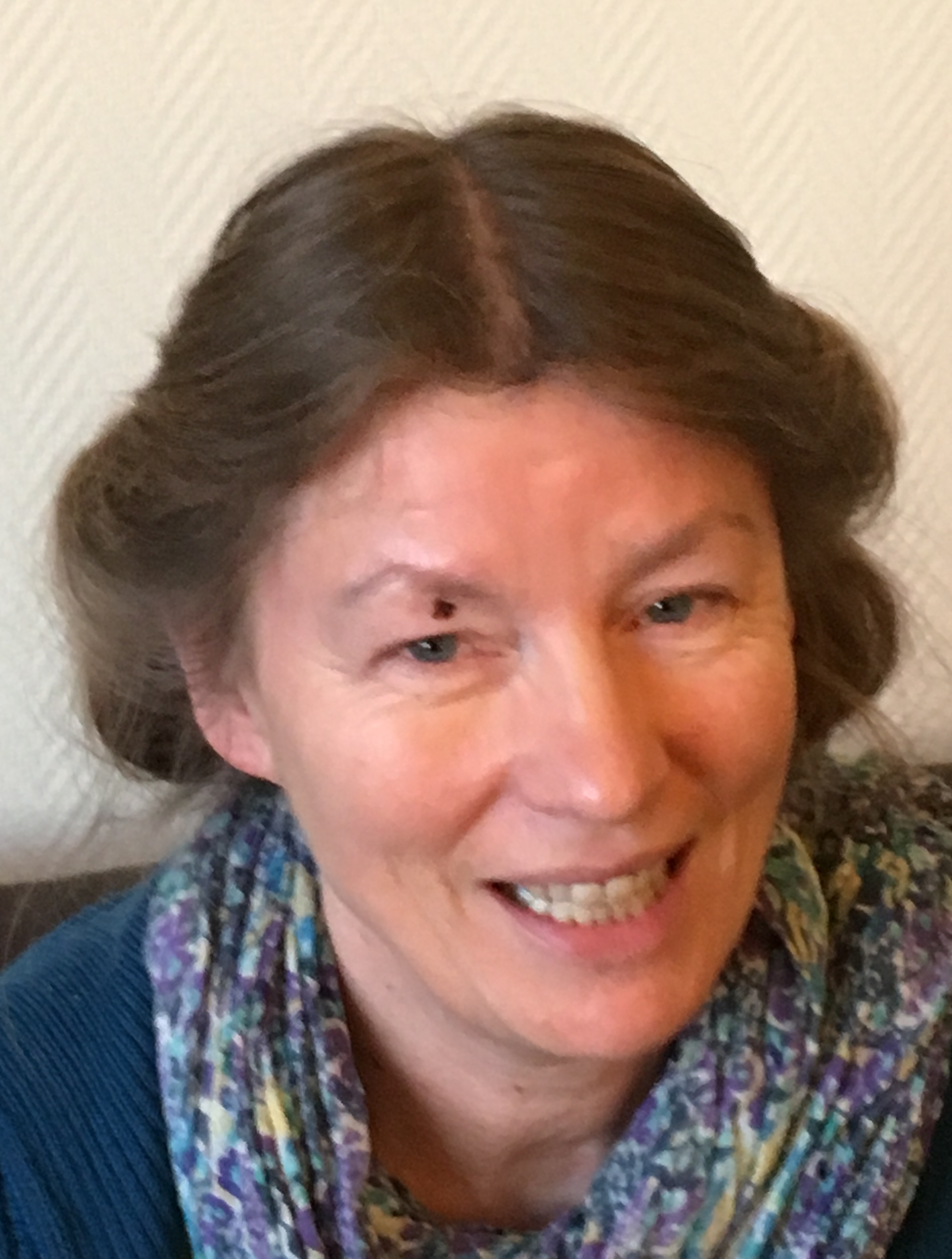
“That will be a challenge we would like to try to understand,” Astrup said.
The expectation is that they will work with agitated patients in the same manner that they work with all patients, engaging in a respectful dialogue with them, and that the ward atmosphere will provide its own calming effects. If a patient becomes agitated, they will want to know: “Why are you so agitated? Have we done anything toward you that would make you so agitated? What can we do to make it better for you?”
It will be important, she added, that “we not make rules that say, ‘you should not break a glass.’ We need to create an atmosphere where this is a place where such things don’t happen. And if someone did throw a glass, we will look at it as the community that broke down. We didn’t want (the person) to have to throw a glass to get our attention.”
Again and again, Astrup and her staff spoke about how all this is so new, and how they have so much to learn. At the same time, they spoke with confidence of being able to respond well to the challenges that will come, and with confidence too that their ward, since it was established in response to a directive from the Health Ministry, will be given a real chance to succeed.
Hald, for his part, sees this ward as a step toward wholesale change in Norwegian psychiatry. “Is this going to work? I think so, but I am not sure how we will do it. It is going to be a challenge. But if this works well, the whole mental health system has to change. This would transform the system.”
Grein birtis upphaflega á madinamerica.com






